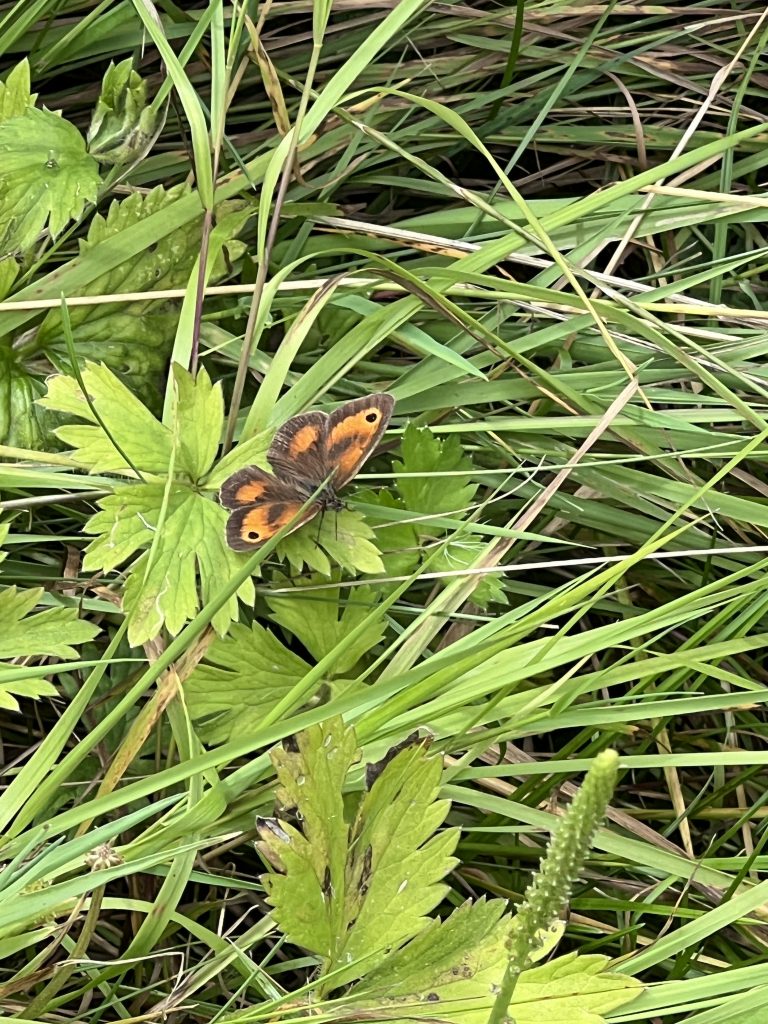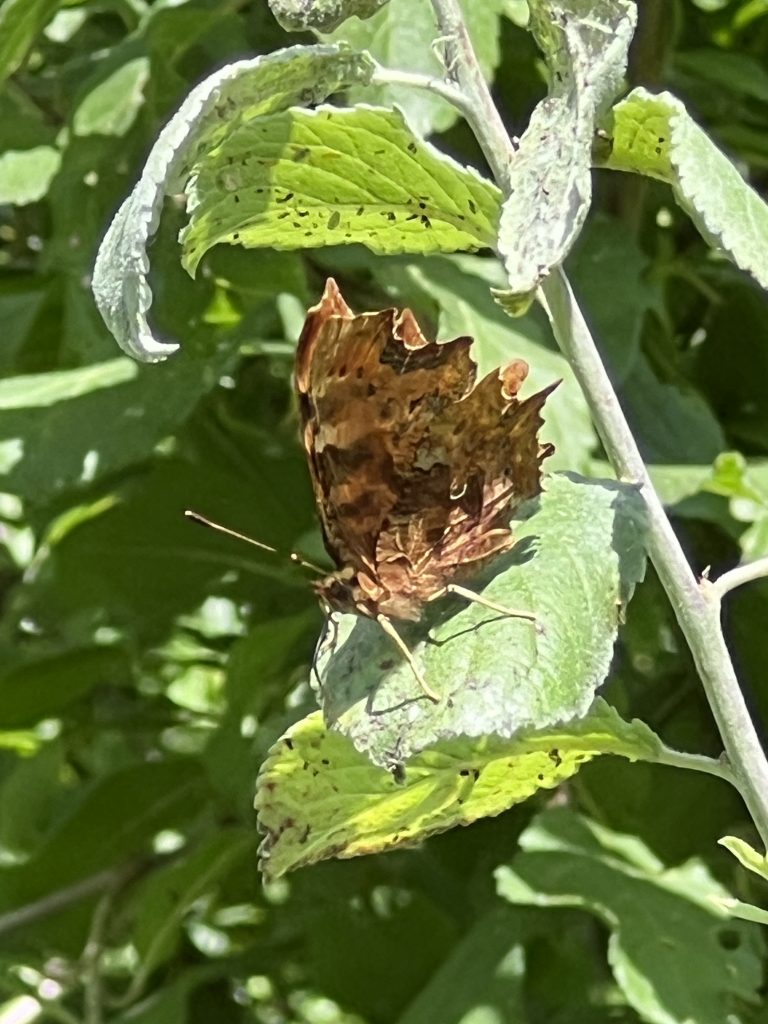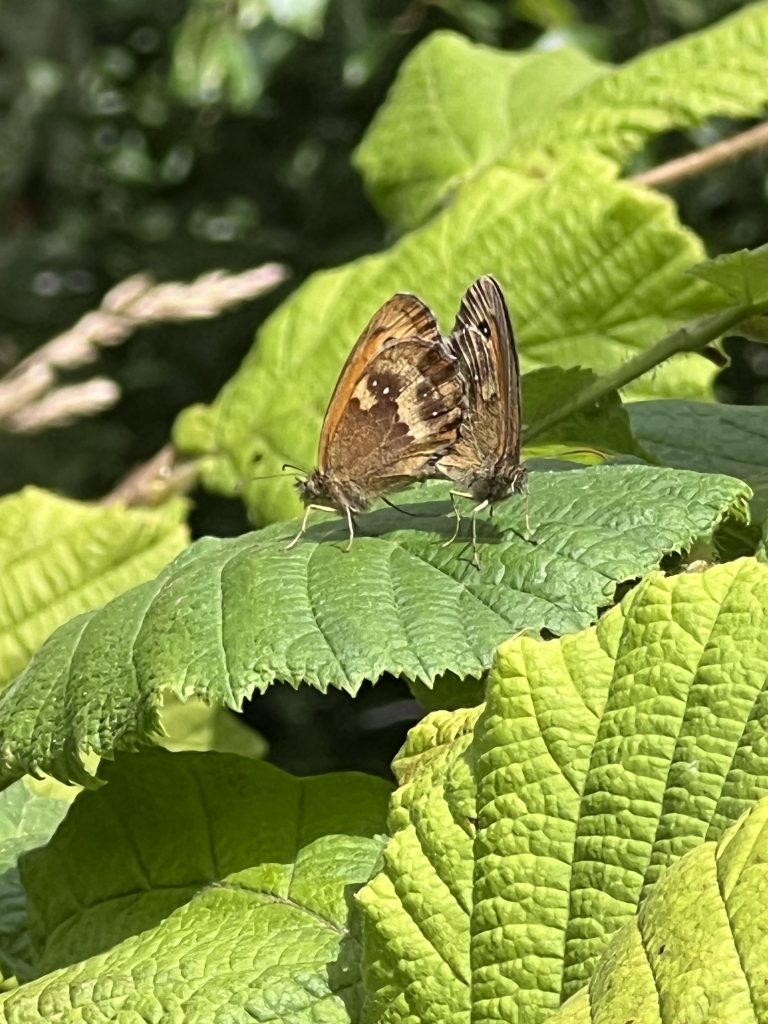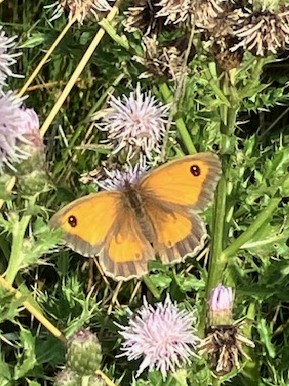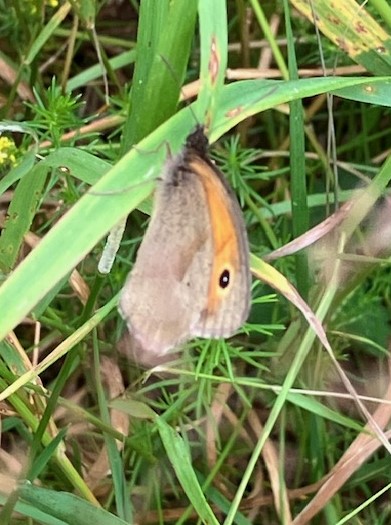How it started:
We would like to introduce you to Simon who has been interested in butterflies since he was ten.
Adult butterflies are important pollinators and their caterpillars provide food for birds and other animals. They are highly sensitive to habitat change and their presence or absence is a good indicator of environmental health and therefore our health. The UK butterfly population is one of the most well studied in the world with fifty years of survey data available. Data on butterflies is used nationally as one of a number of key indicators of biodiversity trends.
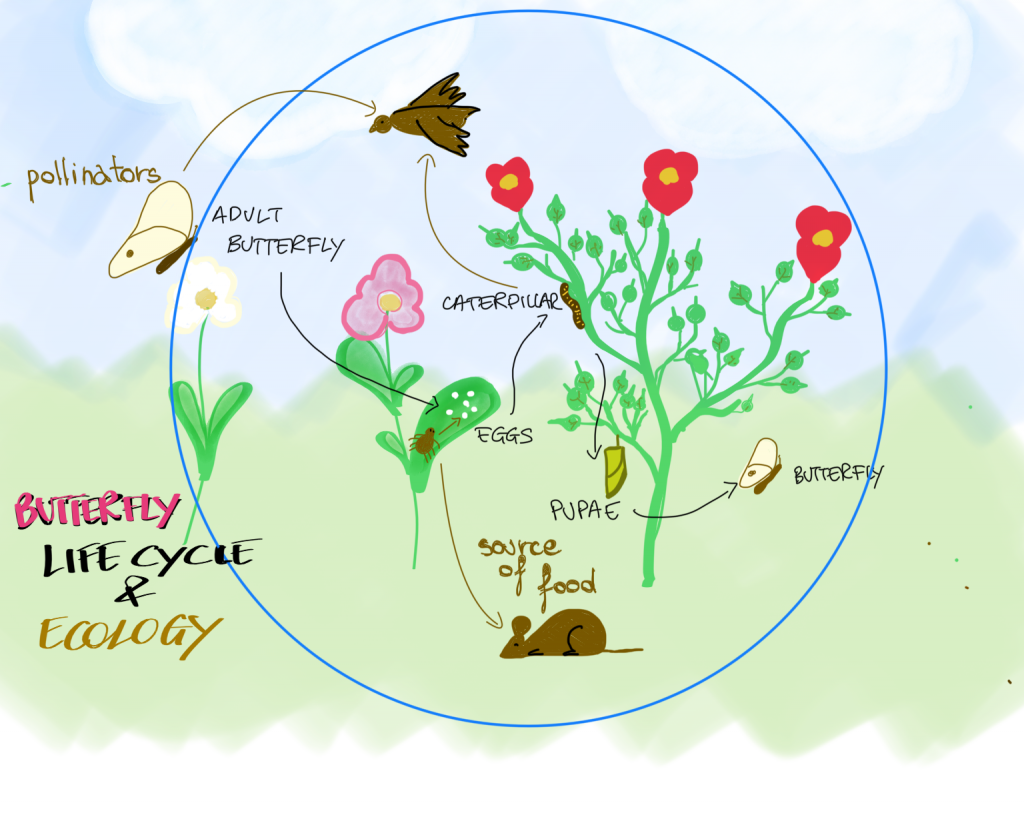
Simon started systematically recording butterflies in the area around Hogacre in 2023 as it is lacking in historical records. This year (2024) he set up a transect in the floodplain under the UK Butterfly Monitoring Scheme. Part of the transect route runs through the Hogacre site. As well as contributing to national data records, this activity will provide scientific data on butterflies in the Eco park which can be compared with local and national trends. This will give insights into how biodiversity is changing at Hogacre and in the surrounding area. He intends to keep surveying the area for at least the next 5 years, and hopefully longer.
Simon identified 21 species of butterfly in the general floodplain area in 2023, with 16 of these species present at Hogacre. This showed Hogacre to have a healthy presence of butterflies with sizeable colonies of Marbled White, Meadow Brown, Brown Argus and Gatekeeper. These butterflies are common in the UK.
To help him with the surveying Simon works with 2 volunteers. A local parent got involved, Charlotte with her little son, and another local resident, Saskya, also helps to survey.
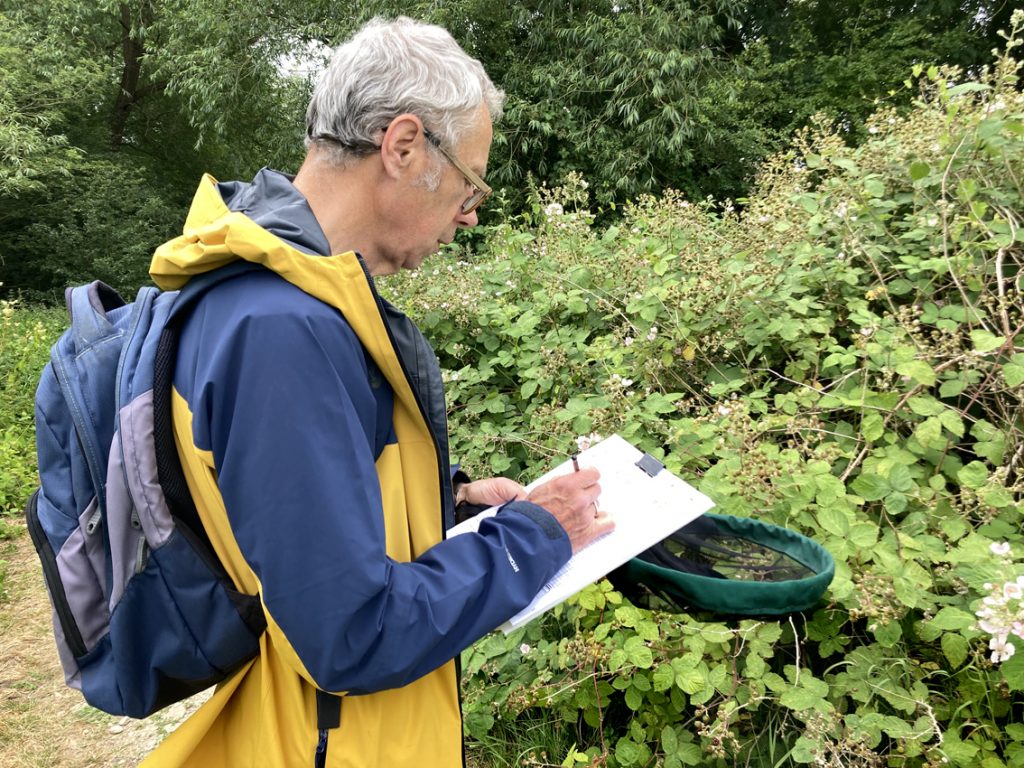
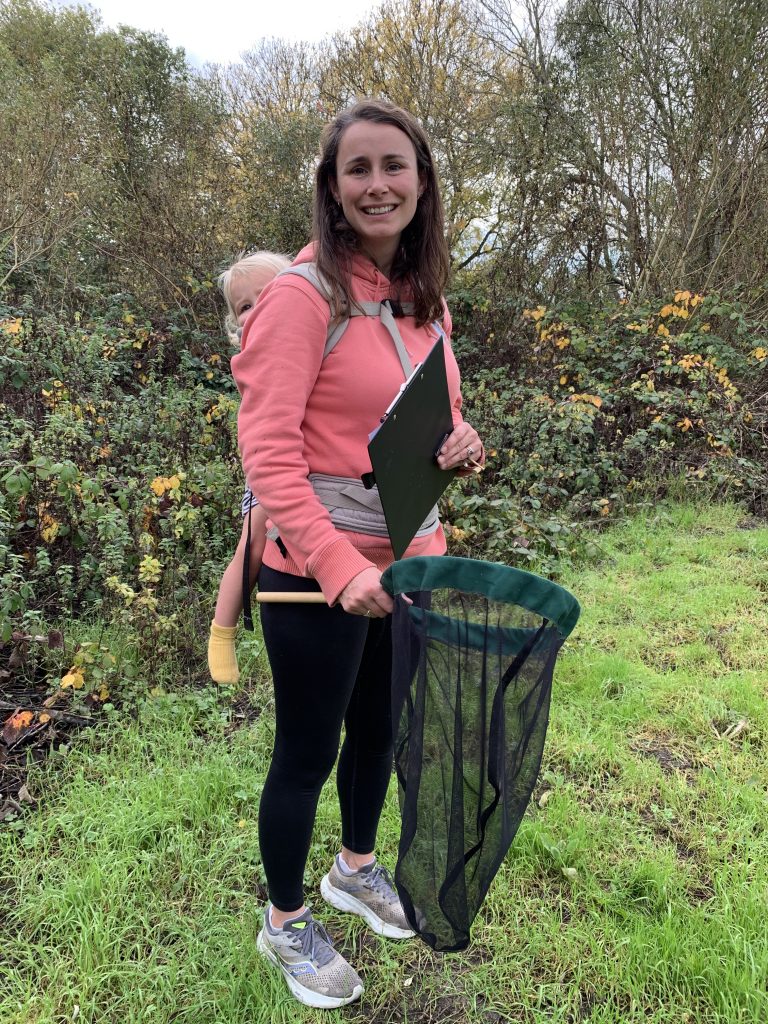
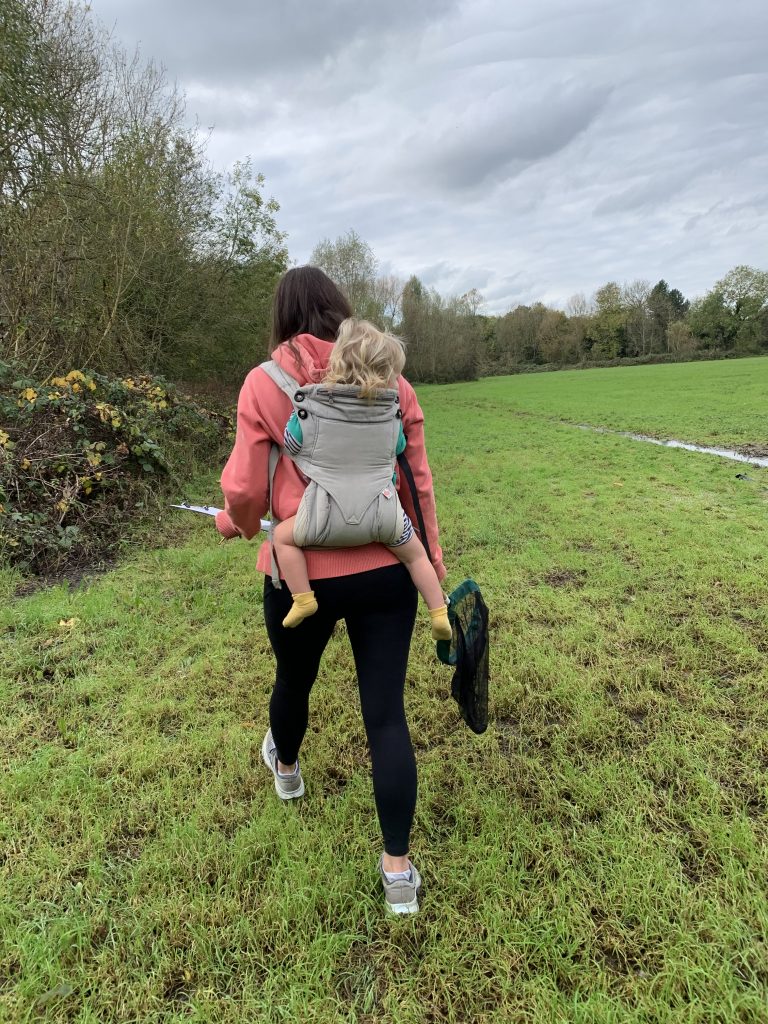
But Simon also recorded one sighting of a Brown Hairstreak which is a species of conservation concern.
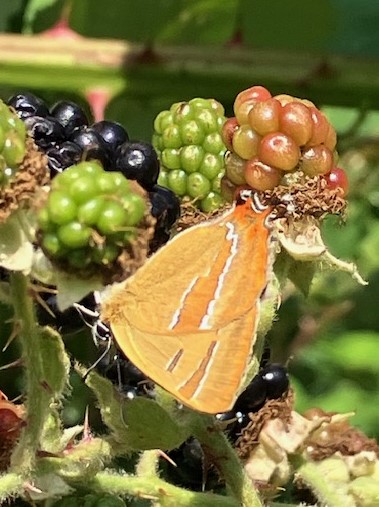
Egg finding
Brown Hairstreak adults are often hard to spot so the best way to establish whether a colony is present is to look for their eggs. Once the leaves have fallen from the Blackthorn trees, you canexpect to find Brown hairstreak eggs in the new south-facing Blackthorn growth, if the butterflies are present.
On a freezing Saturday a group of 4 adults and 1 child ventured to Hogacre searching for the eggs.
Success!
On the Blackthorn where we first started looking, three Brown Hairstreak eggs were found! More were discovered later. We can now safely say we have Brown Hairstreak butterflies at Hogacre!
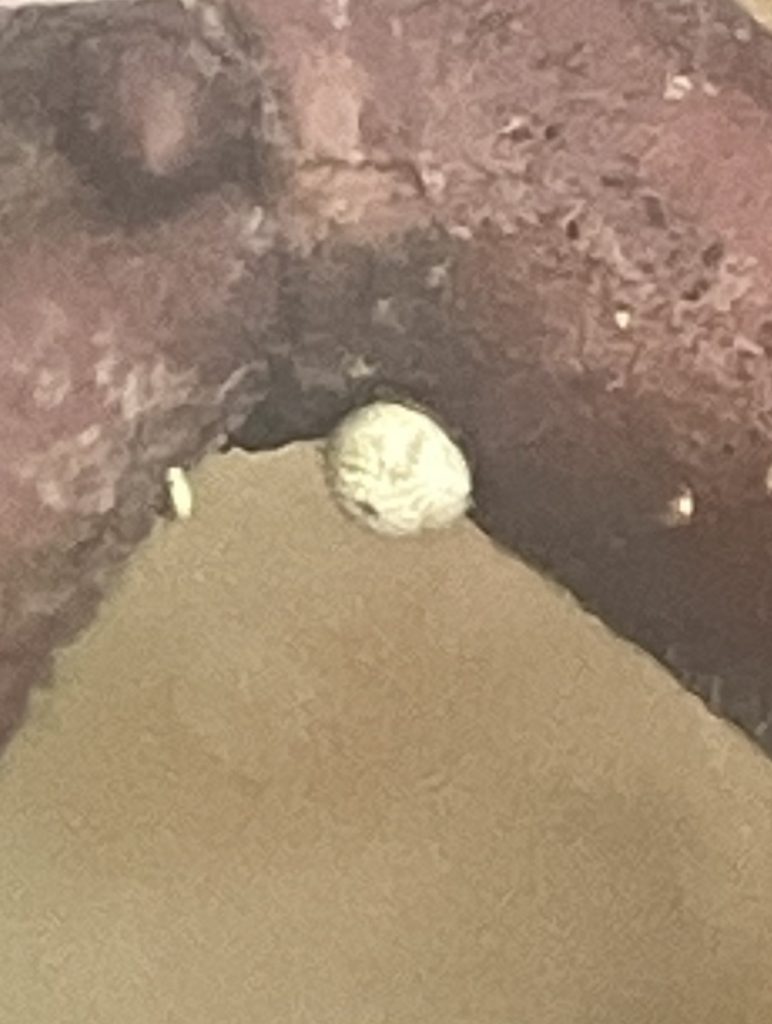
Not to be confused with the eggs of the blue-bordered Carpet moth!
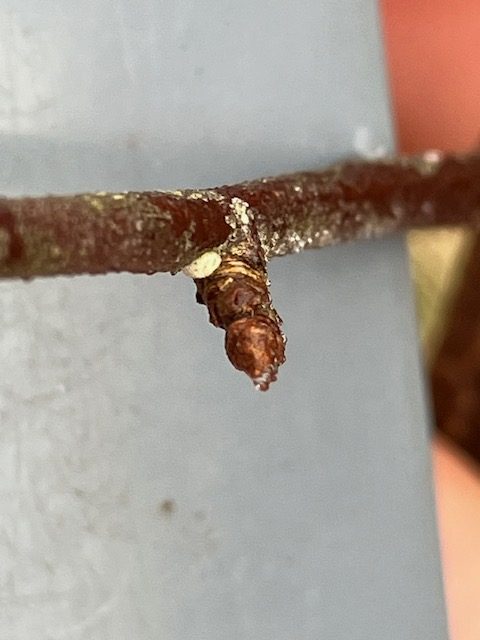
Good News! The finding has been recognised and accepted by IRecord!!
Simon’s record of the Brown Hairstreak eggs has been accepted as correct. Dave Wilton, who approved the record, is the Brown Hairstreak lead for Upper Thames Branch of Butterfly Conservation. Good to have this official confirmation!!
Here’s a recent Guardian article on the Brown hairstreak
Not only Brown Hairstreak!
Small Heath butterfly at Hogacre
Simon, Charlotte and Saskya, have been recording on the transect since the start of the butterfly season. The cold wet Spring resulted in low numbers initially but they did find a Small Heath at Hogacre on 12 May – see photo.
I didn’t see any Small Heath last year anywhere in the floodplain, said Simon, though I thought they might be present and was looking for them. So finding one was very exciting. They have 2 -3 broods a year so should be around from now through to September. The one we spotted was in the area of scrub which is destined to become woodland.
Butterfly numbers picked up from late June with Meadow Brown, Small and Large Skipper, Ringlet, Marbled White and Gatekeeper all emerging.
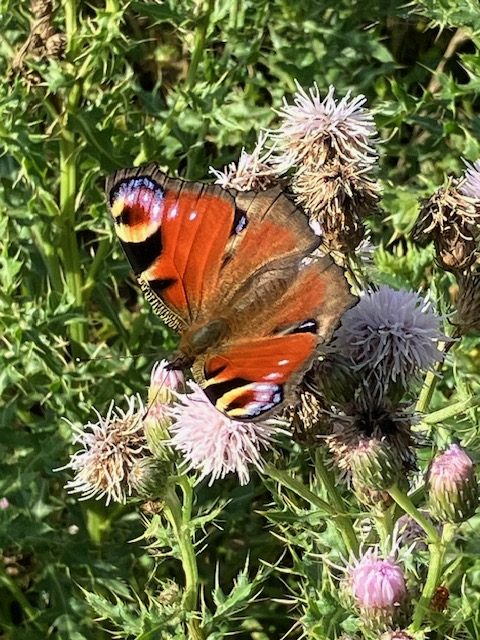
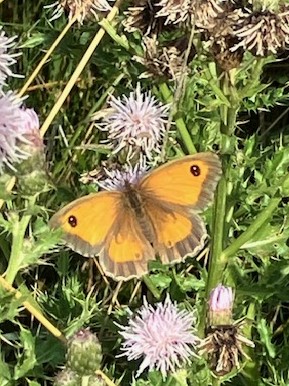

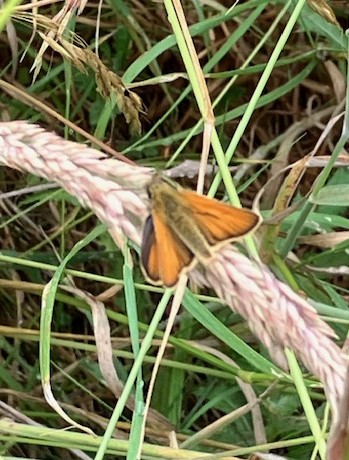
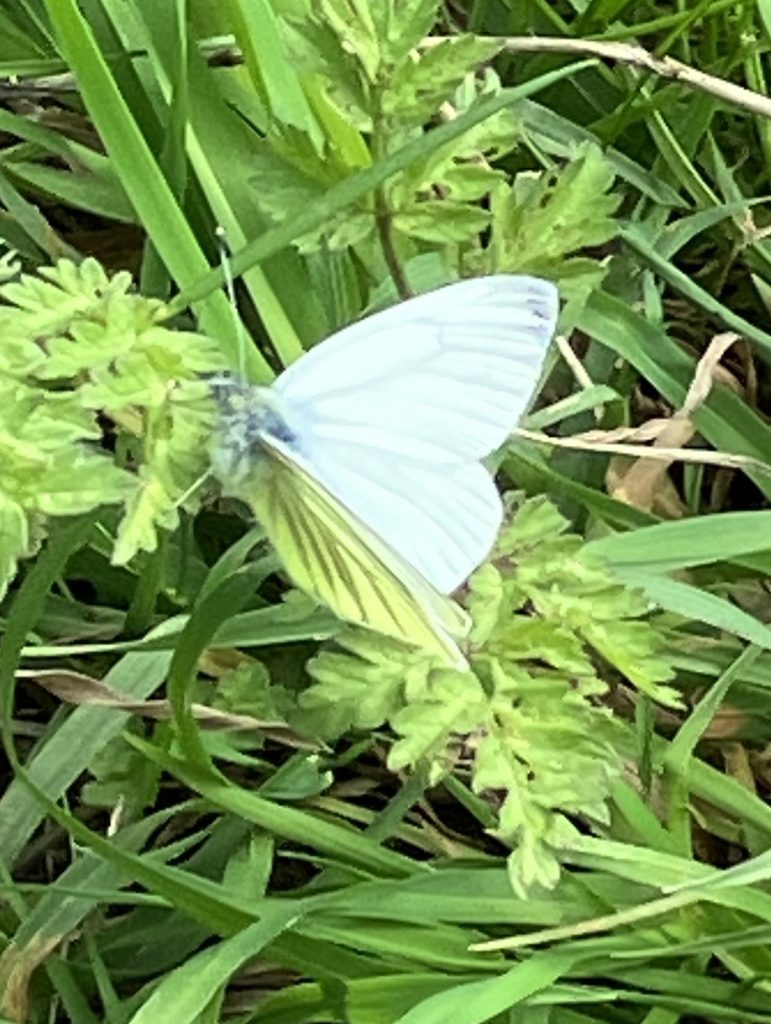
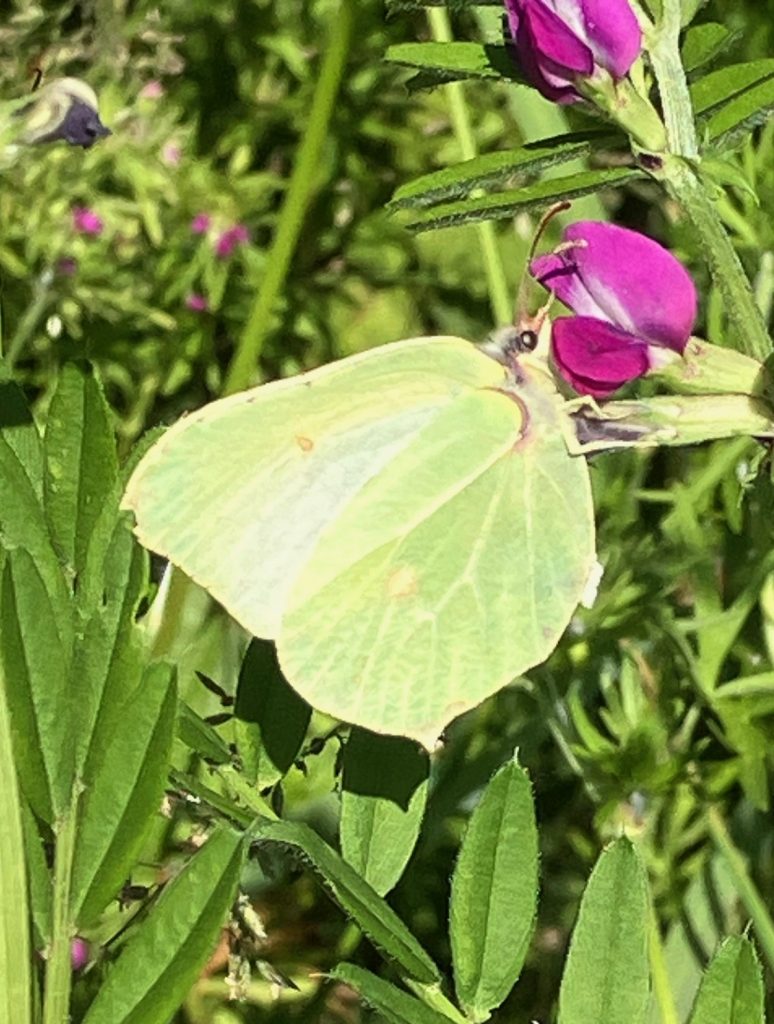

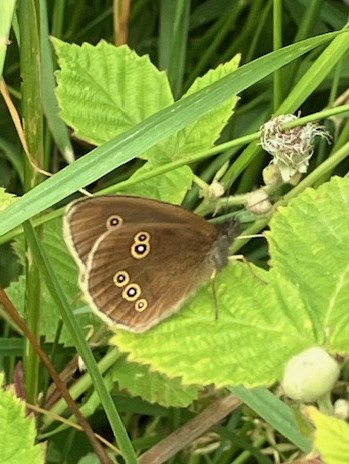
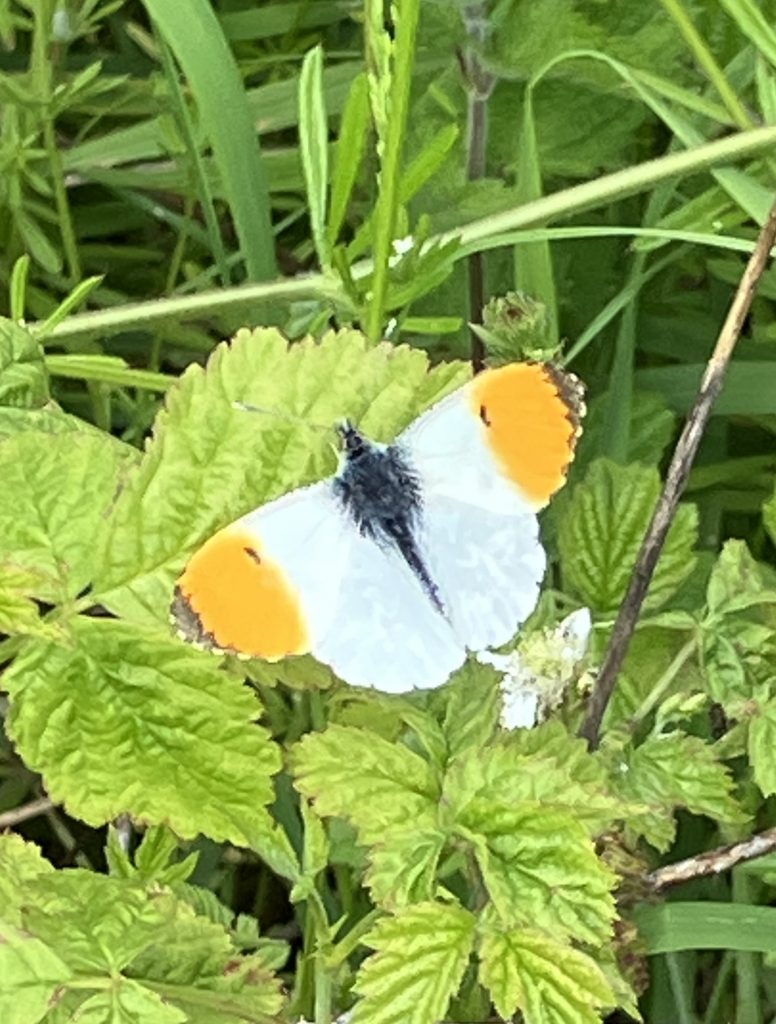
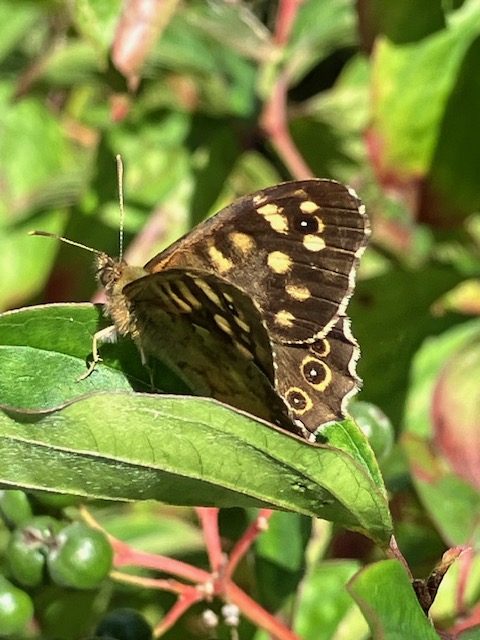

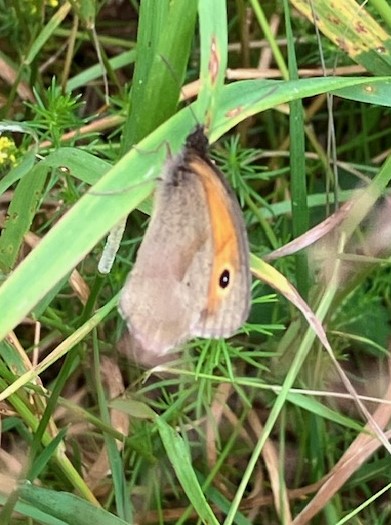
Demoiselle damselflies too…
As well as surveying for butterflies Simon also looks out for other insects. On 30 May he reported:
There are a lot of Banded Demoiselle damselflies around at the moment. You see the adults May-Sept. The males are a metallic blue with large black ovals on the wings, the females are metallic green. It’s a very common damselfly. The significance of them being at Hogacre and in the meadow across the Hinksey Stream (where the photos below were taken) is that it indicates the stream is relatively healthy. The larvae live in slow flowing muddy rivers and are sensitive to high nitrate and phosphate levels from fertilisers and sewage. So their presence is an indicator of the ecological health of the stream. I’ve also seen Common Blue and Blue–tailed damselflies by the stream.
Simon posted records of these damselflies on iRecord and these have been confirmed as correct.
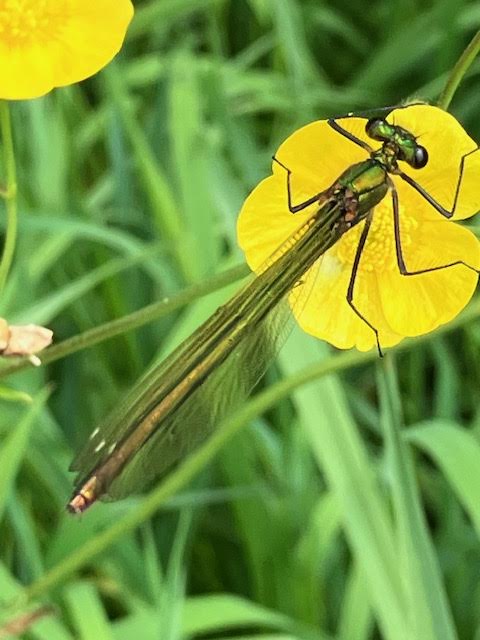
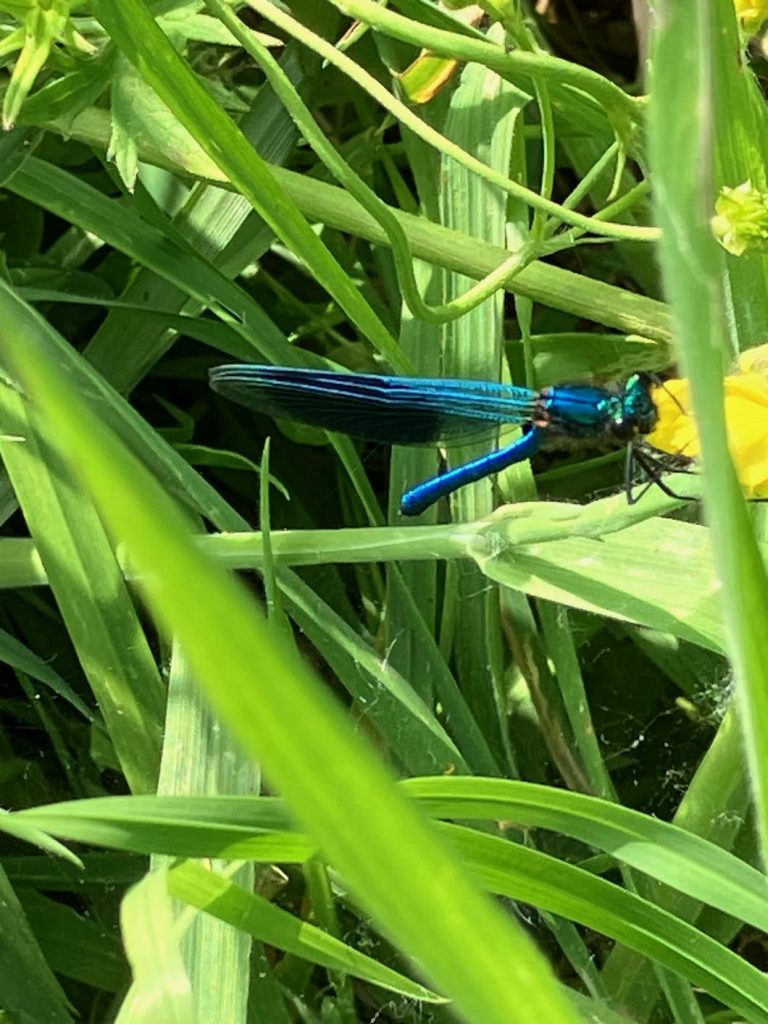
Here are some we found during the “Big Butterly Count” held in July 2024
